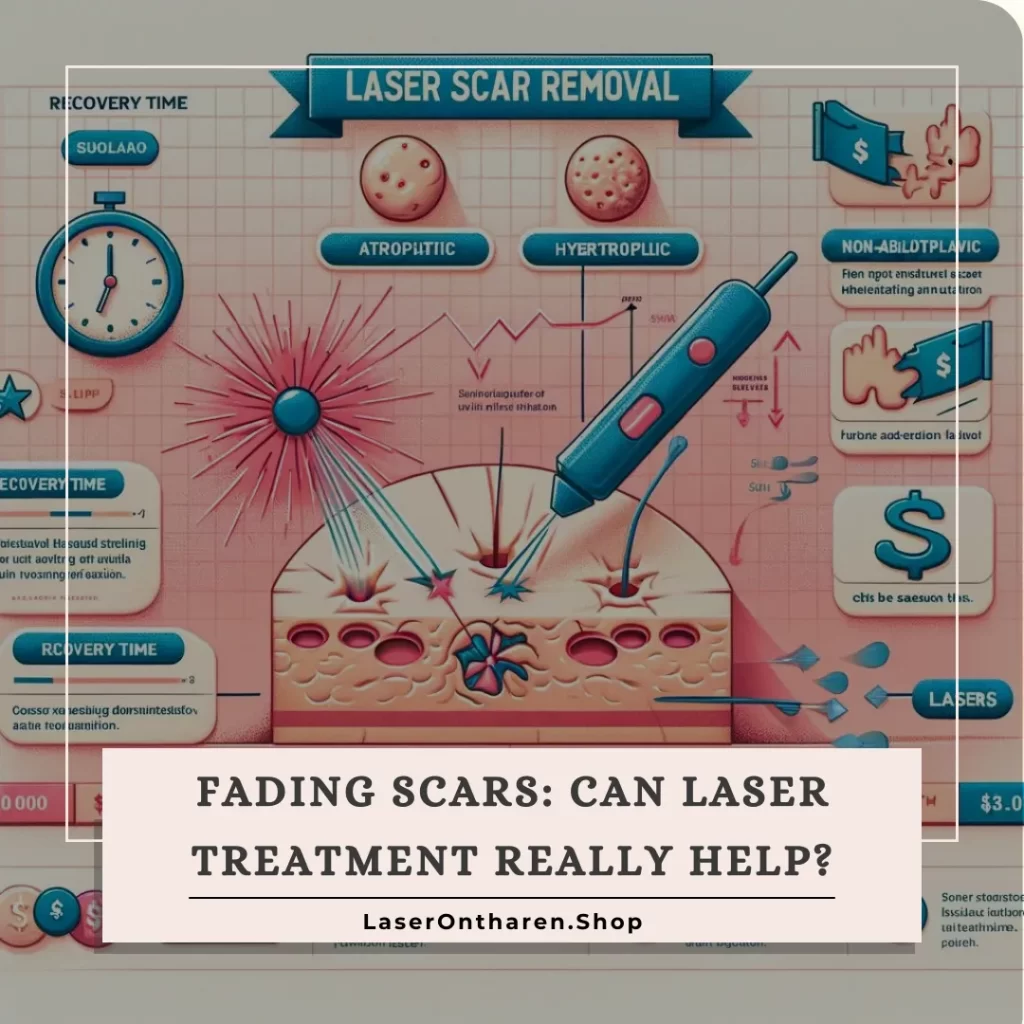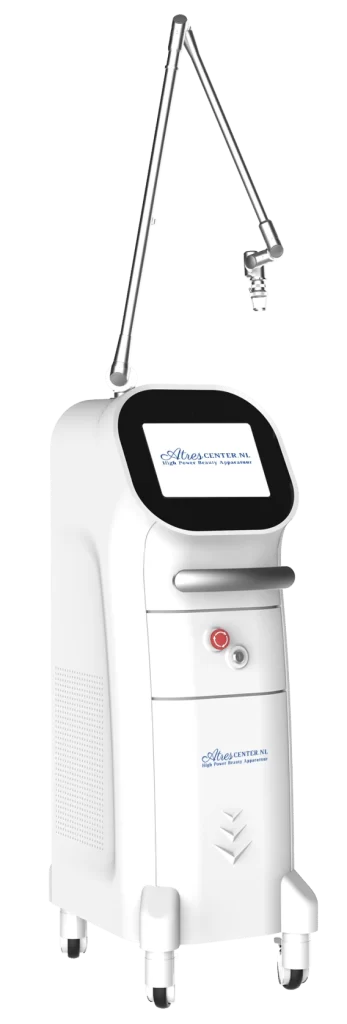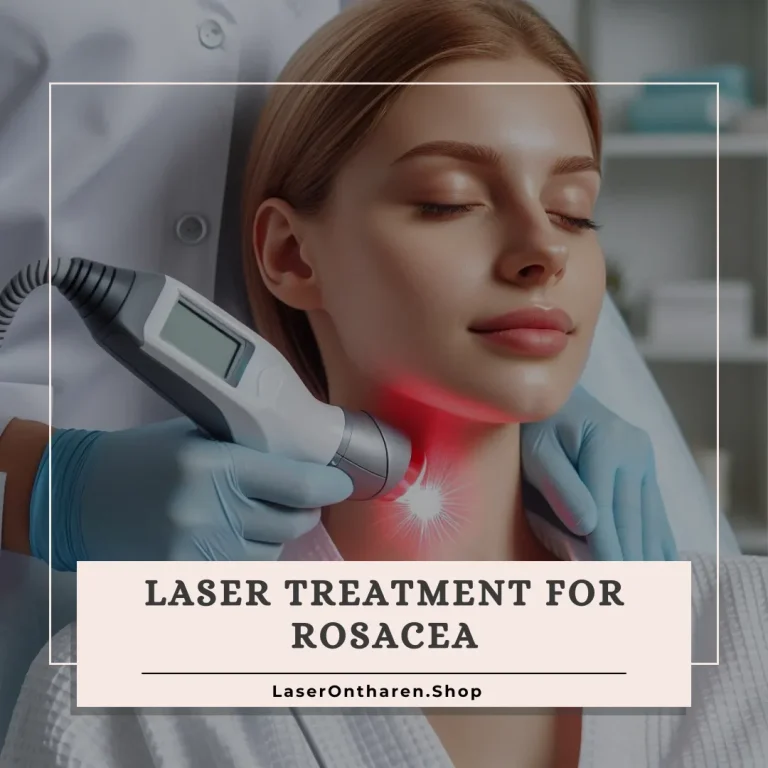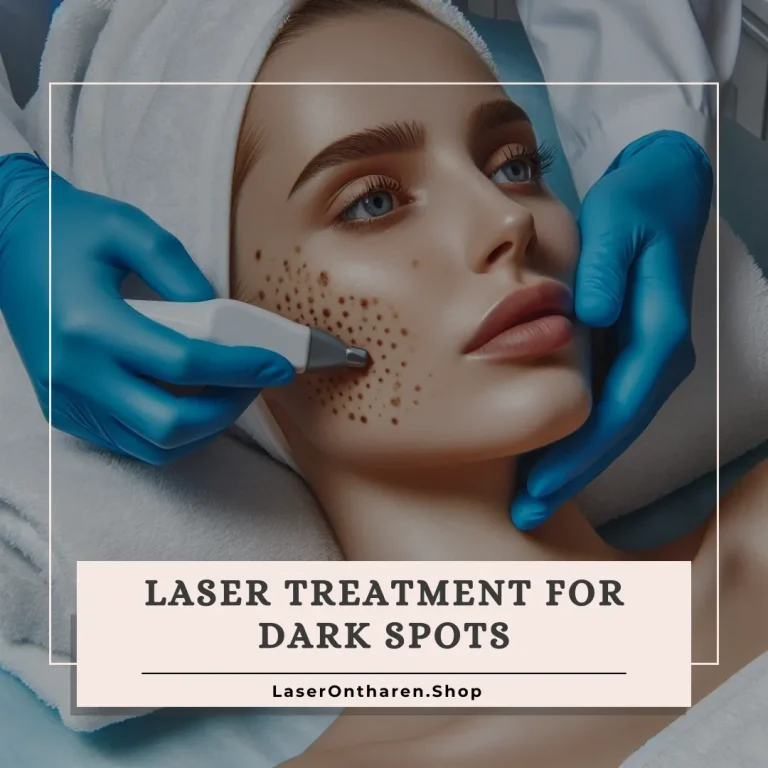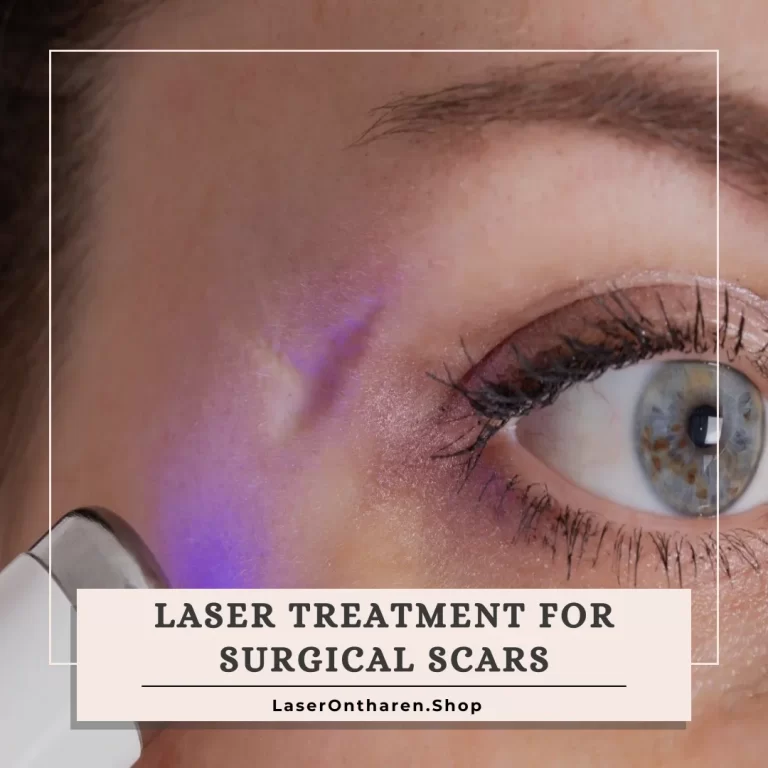Introduction
Scars are a natural part of the body’s healing process, resulting from an injury, burn, surgery, or skin condition like acne.
They vary in shape, size, and color, making some people feel self-conscious about their appearance.
Scars are broadly categorized into three types:
- atrophic (depressed scars)
- hypertrophic (raised scars)
- and keloid (extremely raised scars that can grow beyond the injury site)
For those seeking to improve the appearance of their scars, laser scar removal presents a compelling solution.
This advanced treatment option utilizes focused light energy to reduce scar visibility, offering hope to many.
How Does Laser Scar Removal Work?
Laser scar removal operates on the principle of using focused light energy to target and modify the skin’s structure.
This process is meticulously designed to reduce the visibility of scars, making them less noticeable and improving the skin’s overall texture.
Types of Lasers Used
Laser technology in scar treatment is categorized into two primary types based on their mode of action:
- Ablative Lasers:
These lasers work by resurfacing the skin.
They remove the outer layer of skin (epidermis) and heat the underlying skin (dermis), which stimulates the growth of new collagen fibers.
As the treated area heals, the new skin that forms is smoother and firmer. Examples include CO2 lasers and Erbium:YAG lasers.
- Non-Ablative Lasers:
Unlike ablative lasers, non-ablative lasers do not remove any skin. Instead, they heat the skin beneath the surface, encouraging new collagen growth and cellular renewal.
These lasers are less invasive and require less downtime, making them a popular choice for those with less severe scarring.
Types include pulsed-dye lasers and Nd:YAG lasers.
Additionally,
fractional lasers represent a newer technology that combines the benefits of both ablative and non-ablative lasers.
They create microscopic wounds within the targeted areas, leaving surrounding tissues intact.
This approach promotes rapid healing and a more efficient collagen production process, making it an effective solution for scar treatment.
Our Device: The Best Laser Machine for Scar Removal
Our state-of-the-art device embodies the pinnacle of laser technology for scar removal.
Equipped with CO2 fractional laser capabilities, it offers a comprehensive solution for those seeking to diminish the appearance of scars.
The device’s specifications include:
- Power of RF: 800W
- Frequency of RF: 2Mhz
- Infrared Laser Power: 20w
- Infrared Laser Wavelength: 940nm
- Ultrasound Power: 200W
- Vacuum Intensity: 10-90Kpa
- Dimensions: 532mm x 537mm x 1130mm
- Weight: 50Kg
These specifications ensure a versatile and effective treatment for various scar types, providing patients with significant improvements in scar appearance.
What Scars Can Be Treated with Laser Removal?
Laser scar removal is adept at treating a wide range of scar types, offering hope to those with:
- Acne scars
- Surgical scars
- Burn scars
- Stretch marks
It’s important to note that while laser treatment can significantly improve the appearance of scars, results vary based on the individual’s skin type, scar type, and the laser technology used.
Benefits and Risks of Laser Scar Removal
Benefits
- Improved scar appearance, including reduced redness and smoother texture
- Minimal scarring compared to surgical alternatives
- Non-invasive with minimal downtime
Risks
- Temporary side effects such as redness, swelling, and crusting
- Risk of hyperpigmentation or hypopigmentation
- Rarely, infection
What to Expect During Laser Scar Removal Treatment
The journey to improved scar appearance begins with a consultation. A dermatologist assesses the scar type, and suitability for laser treatment, and discusses the desired outcome.
Pre-treatment instructions may include sun protection measures and avoiding certain medications.
The procedure’s specifics, including the type of laser, anesthesia use, discomfort level, and duration, are thoroughly explained.
Post-treatment care focuses on wound healing, sun protection, and the potential use of topical creams.
Cost and Recovery Time
Understanding the cost and recovery time associated with laser scar removal is crucial for those considering this treatment option.
The cost can be quite variable and is influenced by several key factors:
Scar Size and Severity: Larger or more severe scars may require more intensive treatment or multiple sessions, leading to higher costs.
Treatment Type: The choice between ablative and non-ablative lasers affects cost. Ablative lasers are generally more expensive due to their complexity and the results they can achieve.
Number of Sessions Required: Depending on the scar’s characteristics and the desired outcome, multiple treatment sessions may be necessary. Each session adds to the overall cost.
Geographic Location: Costs can vary significantly based on where the treatment is performed. Larger cities or regions with higher costs of living may have higher prices for laser treatments.
Practitioner’s Expertise: Experienced dermatologists or cosmetic surgeons may charge more for their services but also offer a higher level of skill and potentially better outcomes.
As for recovery time, it is another important consideration:
Ablative Lasers: These lasers are more invasive, removing the top layer of skin and part of the underlying dermis. Recovery can take anywhere from one to two weeks, with the skin initially appearing red and feeling tender. Complete healing and the full effect of the treatment may not be visible for several months as the skin regenerates.
Non-Ablative Lasers: Recovery from non-ablative laser treatment is quicker, often requiring just a few days for initial redness and swelling to subside. Since these lasers are less invasive, patients can typically return to their normal activities shortly after treatment. However, achieving the desired results might require more sessions over time.
It’s essential for individuals to discuss these factors with their healthcare provider to get a detailed understanding of the expected costs and recovery timeline specific to their situation.
Alternatives to Laser Scar Removal
While laser scar removal is a popular and effective method for improving scar appearance, it’s not the only option available. Individuals seeking alternative treatments might consider:
Silicone Gel Sheets: These are non-invasive treatments that can be applied to the skin.
Silicone gel sheets work by hydrating the scar tissue, which can help reduce the scar’s appearance over time.
They are especially effective for hypertrophic scars and keloids and can be used for extended periods.
Steroid Injections: Steroids can be directly injected into the scar tissue to reduce redness, itching, and swelling.
This method is particularly useful for hypertrophic scars and keloids, helping to flatten and soften the scar.
Multiple treatments are often necessary for optimal results.
Surgery: For severe scars that cannot be effectively treated with lasers or other non-invasive methods, surgical removal might be considered.
This involves excising the scar tissue and possibly using skin grafts or other reconstructive techniques.
Surgery is usually a last resort due to the potential for new scar formation and the recovery time involved.
Microneedling: This technique involves using fine needles to create micro-injuries in the skin, stimulating the body’s natural healing process and collagen production.
It can be effective for treating atrophic scars, such as acne scars, by improving the skin’s texture and appearance.
Chemical Peels: Applying a chemical solution to the skin causes the top layers to peel off, revealing smoother, less scarred skin beneath.
Chemical peels can vary in intensity and are chosen based on the scar type and skin condition.
Each of these alternatives has its benefits and drawbacks, and the best choice will depend on the individual’s specific scar characteristics, skin type, and treatment goals.
Consulting with a dermatologist or a qualified skin care professional is essential to determine the most appropriate method for scar improvement.
Conclusion
Laser scar removal offers a promising solution for those seeking to improve the appearance of their scars.
With advancements in laser technology, individuals have access to treatments that offer significant improvements with minimal downtime.
Consulting with a qualified healthcare professional is crucial to determine the most suitable treatment option based on individual needs and scar types.
Additional Tips
Incorporating high-quality images of different scar types and laser treatment procedures can enhance understanding and set realistic expectations.
A “Before and After” section showcasing successful laser scar removal results may also inspire those considering treatment.
Ultimately, taking the step to consult a dermatologist can provide tailored advice and open the door to improved skin appearance and confidence.
